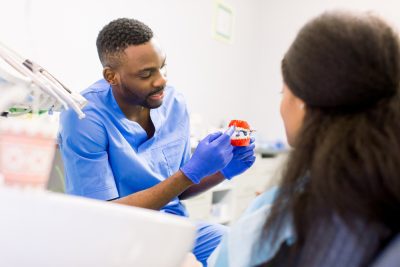Regular breast self-examination represents a crucial component of women’s health care. While medical screenings like mammograms remain essential, understanding and monitoring your own body provides an additional layer of protection. This practice empowers women to take control of their health through regular self-checks that could potentially save lives. With rising breast cancer rates globally, the importance of early detection through self-examination cannot be overstated.
Early detection saves lives
Discovering breast changes early significantly improves treatment outcomes and survival rates. Regular self-examination helps women identify potential issues before they become more serious.
Detection benefits:
- Familiarity with normal breast tissue patterns and consistency
- Quick identification of changes or abnormalities
- Higher chance of early-stage discovery when treatment is most effective
- Better treatment options when found early, including less invasive procedures
- Increased survival rates through prompt medical intervention
- More conservative treatment possibilities with early detection
- Reduced anxiety through regular monitoring and awareness
- Greater confidence in recognizing concerning changes
- Improved outcomes through timely medical consultation
- Better understanding of personal breast health
Personal body awareness
Understanding your body’s normal state helps identify concerning changes more effectively. Regular self-examination builds this crucial knowledge over time.
Knowledge advantages:
- Understanding normal breast texture and composition
- Recognition of monthly changes related to hormonal cycles
- Awareness of personal breast patterns and variations
- Confidence in identifying abnormalities or changes
- Better communication with health care providers about concerns
- Understanding of hormonal influences on breast tissue
- Recognition of age-related changes and developments
- Awareness of pregnancy and breastfeeding-related changes
- Understanding of menopause-related breast changes
- Knowledge of family history implications
Empowerment through health management
Taking control of your health through regular self-examination provides both physical and emotional benefits.
Empowerment benefits:
- Active participation in personal health care decisions
- Reduced anxiety about breast health through knowledge
- Increased confidence in body awareness and health
- Better health care discussions with medical professionals
- Improved medical appointment preparation and communication
- Enhanced health decision-making capabilities
- Greater sense of control over personal wellness
- Improved understanding of preventive health measures
- Better ability to advocate for needed medical attention
- Increased overall health awareness and engagement
Simple and accessible practice
Breast self-examination requires no special equipment or medical visits, making it an accessible health practice for all women.
Practical advantages:
- No financial cost involved
- Can be performed at home in privacy
- Takes only minutes monthly for thorough examination
- Easy to incorporate into daily or monthly routines
- No special tools or equipment needed
- Can be done while showering or dressing
- Fits any schedule or lifestyle
- Accessible to women of all backgrounds
- Can be done without medical training
- Requires minimal time commitment
Long-term health awareness
Regular self-examination establishes positive health habits that benefit women throughout their lives.
Long-term benefits:
- Establishes healthy routines and practices
- Promotes preventive health awareness
- Encourages regular medical check-ups and screenings
- Fosters open health discussions with family and friends
- Builds lifetime awareness of breast health
- Supports overall wellness and health consciousness
- Encourages proactive health care approaches
- Creates foundation for lifelong health monitoring
- Promotes early intervention when needed
- Supports comprehensive women’s health care
Common myths and misconceptions
Understanding the facts about breast self-examination helps women practice it effectively.
Truth vs. fiction:
- Myth: Only older women need to self-examine
- Truth: Women of all ages benefit from regular checks
- Myth: Small breasts don’t need examination
- Truth: All breast sizes require regular monitoring
- Myth: Monthly exams are excessive
- Truth: Regular checks help identify changes quickly
- Myth: Finding a lump means cancer
- Truth: Many lumps are benign, but all need evaluation
- Myth: Self-exams replace mammograms
- Truth: Both screening methods work together
Proper examination technique
Understanding correct self-examination methods ensures effective monitoring of breast health.
Basic steps include:
- Visual inspection
- Stand before mirror with arms at sides
- Raise arms overhead to observe changes
- Look for visual alterations in shape or size
- Check for skin changes or dimpling
- Observe nipple appearance and position
- Note breast symmetry and contours
- Watch for dimpling or puckering
- Check for color changes or redness
- Observe for swelling or distortion
- Look for changes in skin texture
- Physical examination
- Use finger pads for circular motions
- Cover entire breast area systematically
- Include armpit area and surrounding tissue
- Check for lumps or thickening
- Note any unusual sensations or pain
- Examine both breasts completely
- Include nipple examination
- Use varying pressure levels
- Follow a consistent pattern
- Document any changes noticed
Combining with professional care
Self-examination works best as part of a comprehensive breast health strategy.
Health care integration:
- Regular medical check-ups
- Scheduled mammograms as recommended
- Professional clinical breast exams
- Discussion of family history
- Risk assessment evaluations
- Genetic testing if indicated
- Lifestyle modification guidance
- Nutritional counseling when needed
- Stress management strategies
- Overall wellness planning
Final thoughts on breast health
Regular breast self-examination represents an essential component of women’s health care. While not replacing professional screenings, this practice provides valuable insights and potential early warning of health issues. Combining regular self-checks with professional medical care offers the best protection for long-term breast health.
Remember that each woman’s breasts are unique, and understanding your normal helps identify concerning changes quickly. Make self-examination a regular part of your health routine, and never hesitate to discuss concerns with health care providers. Your health deserves this attention and care, and taking charge through regular self-examination empowers you to be your own best health advocate.
This story was created using AI technology.













